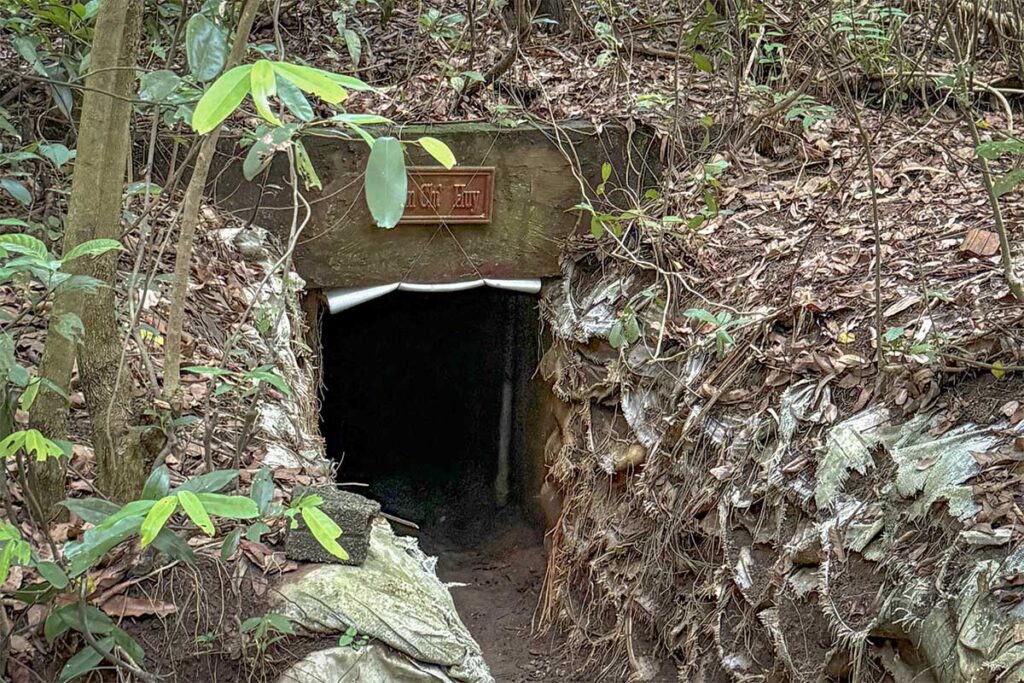What are the Ky Anh Tunnels?
The Ky Anh Tunnels are a network of hand-dug underground passageways used by local resistance forces during the Vietnam War. Built between 1965 and 1967, they run beneath Thach Tan Village in Tam Thang Commune, just southeast of Tam Ky city. Once covering over 30 kilometers, only a small section is now accessible to visitors, with a grassroots tourism setup run by locals who still live in the area.
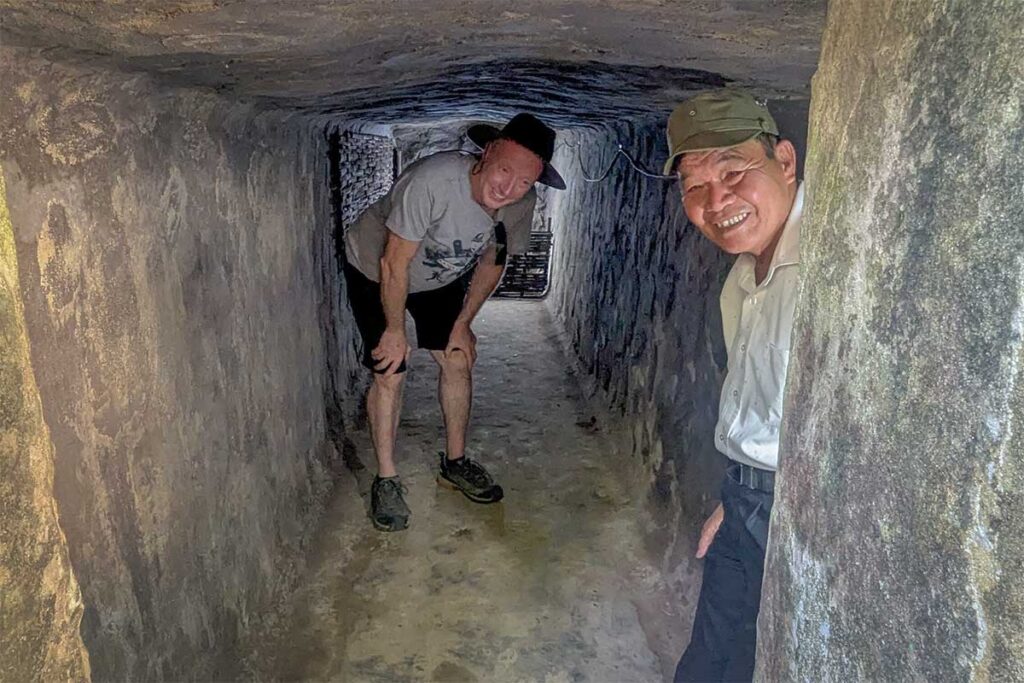
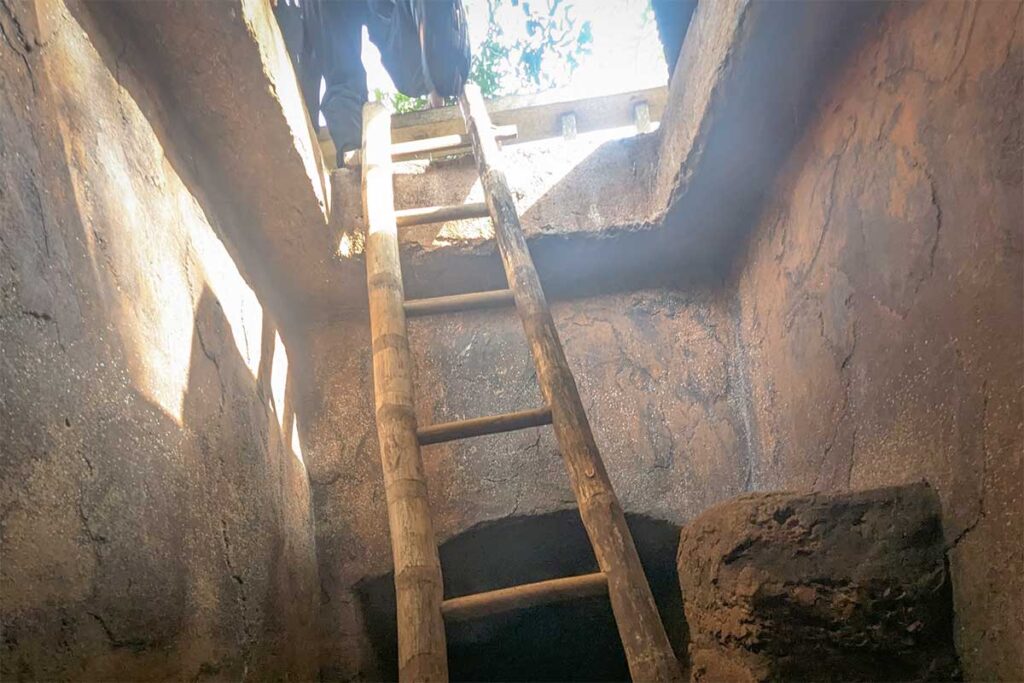
History of Ky Anh Tunnels
The Ky Anh Tunnels were built between 1965 and 1967 during the height of the Vietnam War. Villagers used simple tools like hoes and chisels to carve out over 30 kilometers of interconnected tunnels beneath their homes, fields, and canals. The network was designed for guerrilla warfare — providing shelter, hiding places, and routes for communication and supplies. Key sections included command bunkers, food storage chambers, first aid rooms, and multiple disguised exits to evade detection.
This area became an important base of resistance against both South Vietnamese and U.S. forces. The Thach Tan Communal House above the tunnels served as a key meeting point and supply depot during the war. Locals also used coded signals — such as lanterns at wells or movements by women — to warn of enemy presence. In 1997, the site was officially recognized as a national heritage site. Today, the surrounding village remains involved, preserving both the tunnels and its traditional mat-weaving craft.
What to expect when visiting
Visiting the Ky Anh Tunnels offers a raw and authentic look at wartime history, far removed from the polished displays of places like Cu Chi. Only a small portion of the original 32 km network is open to the public — around 50 to 60 meters — but it’s enough to give a real sense of what life underground was like.


You’ll start at the village’s communal house, where a basic display shows old tools, maps, and photos. There’s also the so-called “unbreakable pillar,” a wartime legend tied to American tanks that failed to destroy it.

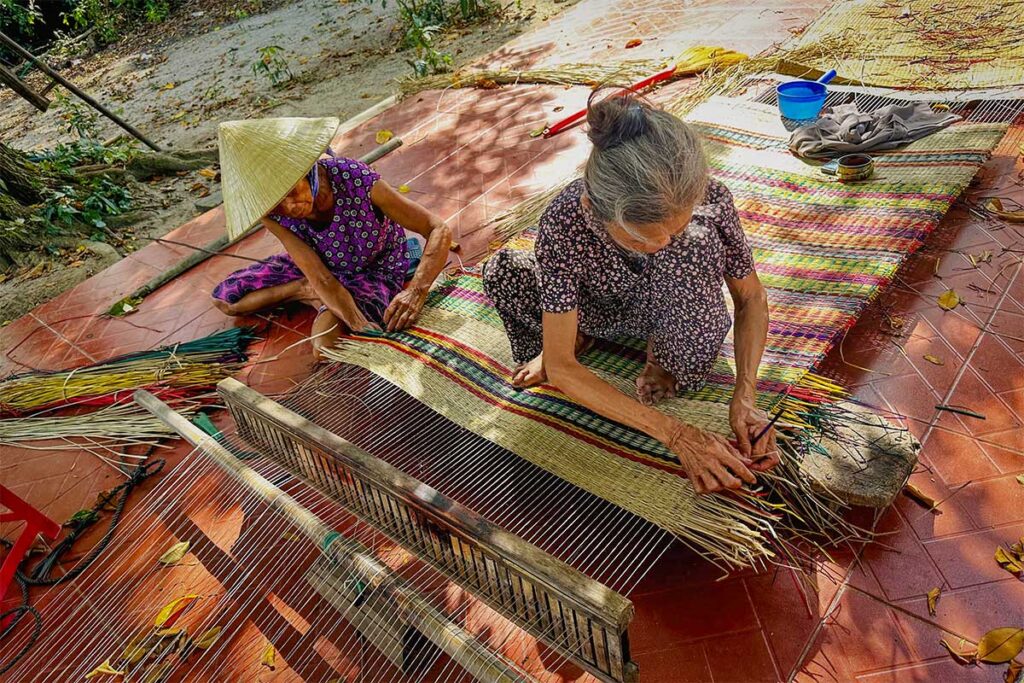
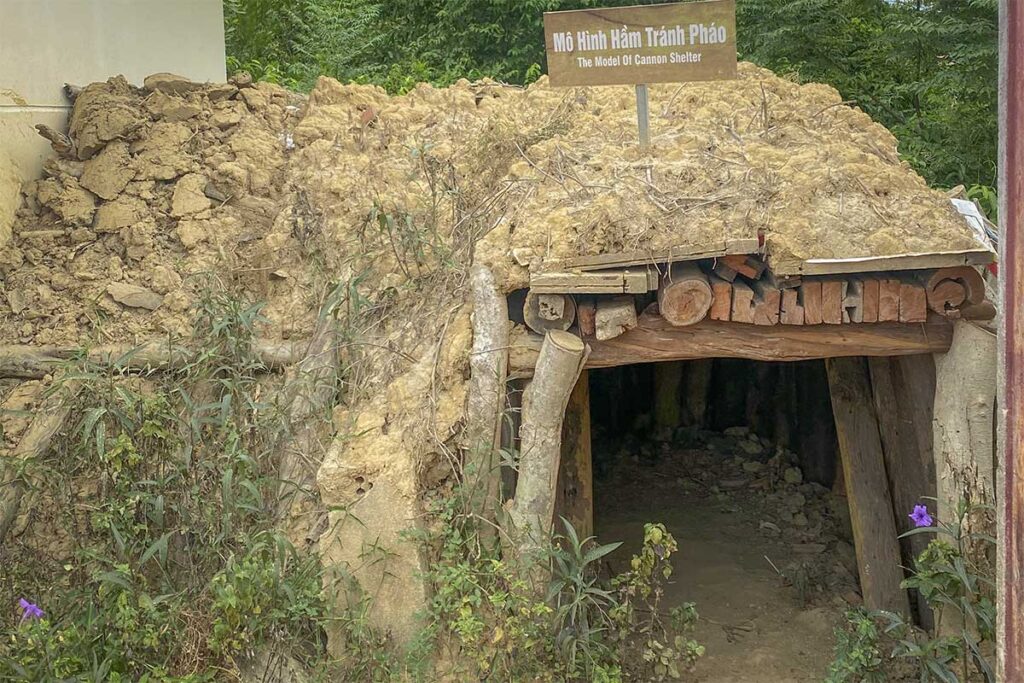
From here, a local guide — often someone with deep roots in the village or even a war veteran — will take you underground. Tours are typically arranged by calling ahead (or on arrival, if lucky), as it’s a small, community-run site.
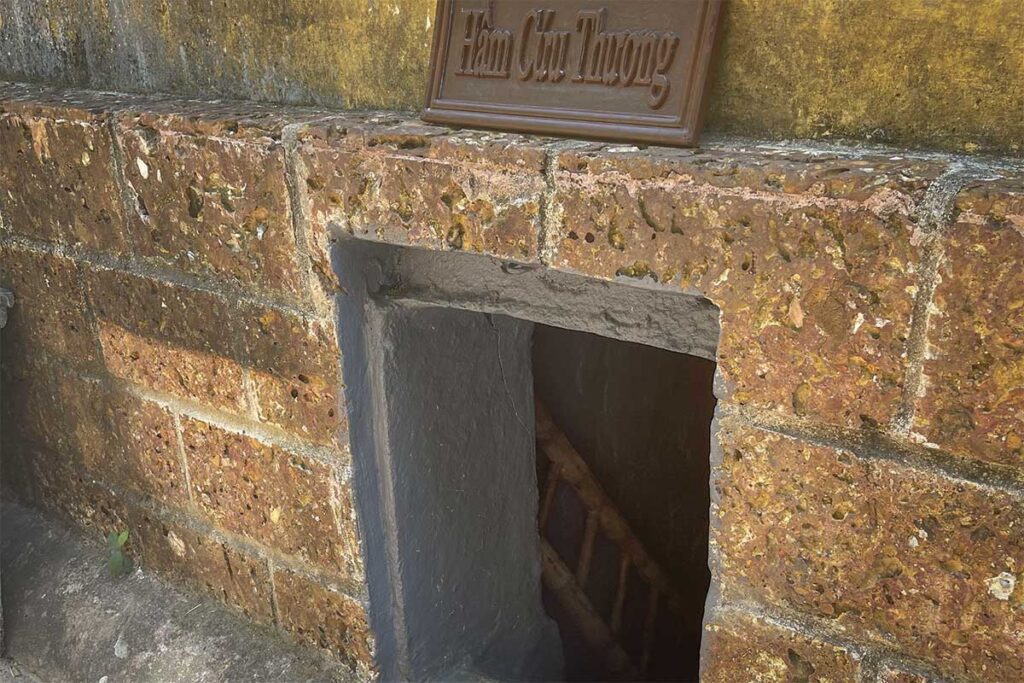
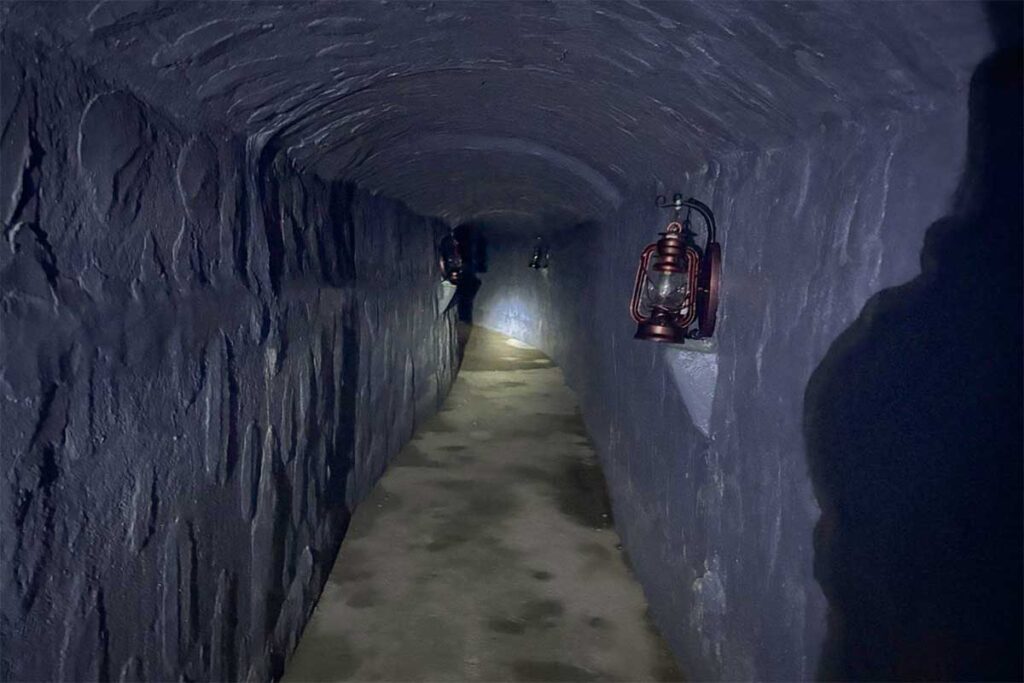
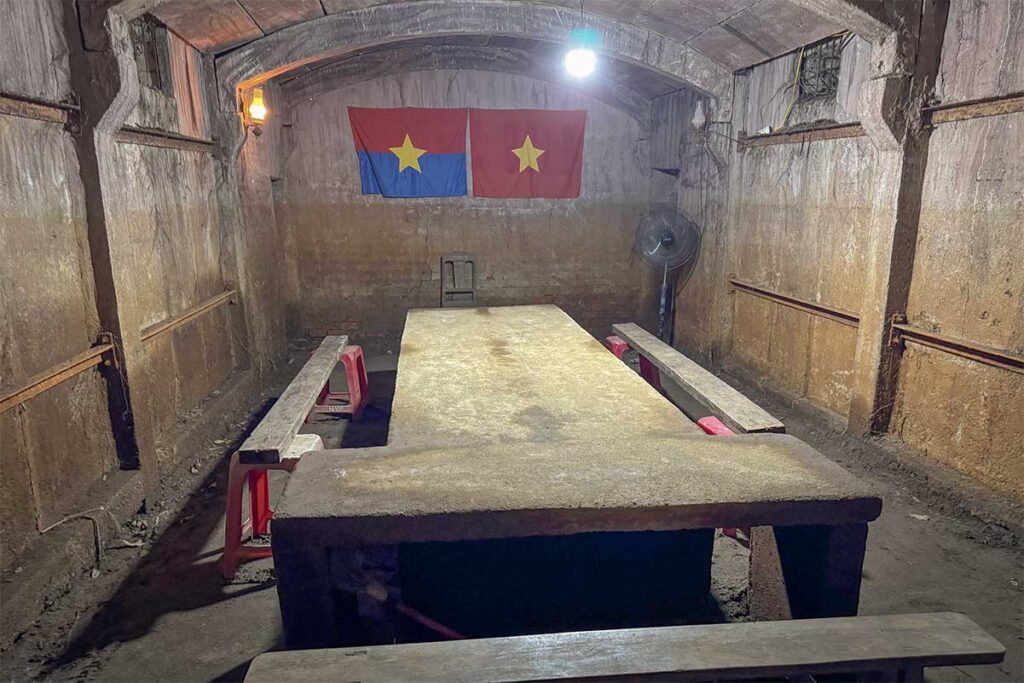
Inside the tunnels, expect narrow, low-ceilinged passageways with no installed lighting. You’ll need to crouch, and in the rainy season, some parts may have standing water or mud. There are no commercial add-ons — just a raw, moving experience guided by those who know the history firsthand.
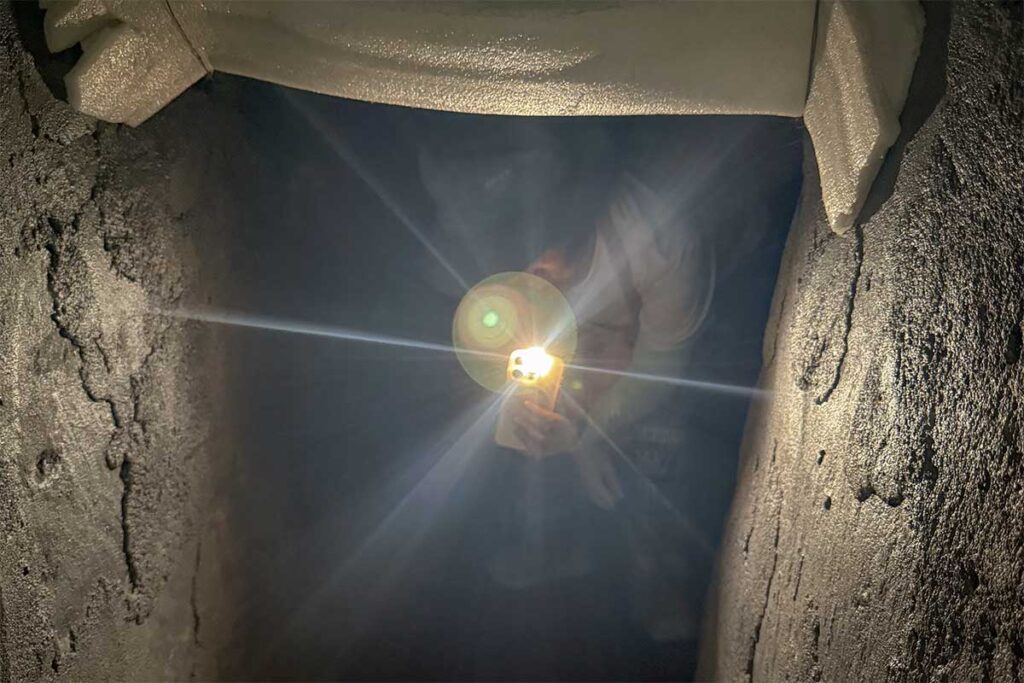
Visiting information
Opening times
Open daily during daylight hours. There’s no formal schedule, but visits typically run from early morning until late afternoon.
Entrance fee
There’s no official ticket. Instead, visitors usually offer a donation to the local guide — around 50,000 to 100,000 VND per person is a reasonable amount.
Local contact requirement
To access the tunnels, you need to call ahead or upon arrival. A local guide (often rotating shifts) will meet you and unlock the site.
Suggested number: +84 966 902 827 (also available on WhatsApp, Zalo, or Line)
Seasonal floodings
Some tunnel sections may be flooded or muddy during the rainy season (October to December). For better access and dry conditions, visit in the dry season (March to August).
How to get there
The Ky Anh Tunnels are located in Thach Tan Village, part of Tam Thang Commune, about 8 km southeast of Tam Ky city and roughly 45–60 minutes from Hoi An by car or motorbike. Because the site is rural and not clearly signposted, you’ll need to plan ahead — there’s no public transport and you must call someone to open the site.
Car with private driver
This is the easiest and most comfortable way to get there. It is recommended to book a car with driver for a half-day or full-day trip, so you can combine the tunnels with other sights. A driver can wait while you explore each stop and help with directions, but won’t handle the call or entry arrangements at the tunnel, so bring the number and be ready to make the call yourself when arriving (or before).
Renting a motorbike
If you’re experienced and comfortable driving, this is a flexible way to visit the tunnels.
- From Hoi An: Take the coastal Vo Chi Cong Road, which is wide, quiet, and more scenic. Avoid Highway 1A, which is full of buses and trucks.
- Use Google Maps to navigate to Thach Tan Communal House (search “Ky Anh Tunnels” or “Đình Thạch Tân”).
- Watch for signs near Tam Thang Industrial Park and small intersections leading into the village. The last stretch is through countryside roads, but paved.
You’ll need to call the local number when you arrive. Be patient — it might take 5–10 minutes for the guide to show up. No reception desk or visitor center.
Tours to Ky Anh Tunnels
There are no public group tours, but there are some private tours with a local guide and transport.
This is the best option if you want historical insight or help communicating on-site. A guide can:
- Arrange the local contact in advance to ensure someone is there
- Translate and explain the war history, which is usually only shared in Vietnamese
- Help you combine other stops in the area and understand the broader story
A driver-only service won’t offer these extras, so if you’re keen on the history and want a smooth visit, this is worth considering.
What is nearby to combine
The Ky Anh Tunnels only take about 45–60 minutes to visit, so it makes sense to plan a few other stops nearby. Most are within a 15–30 minute drive, making it ideal for a half-day or full-day loop around Tam Ky.
Tam Thanh Mural Village
Tam Thanh Mural Village is a great next stop. This seaside fishing village was turned into an open-air gallery by Vietnamese and Korean artists. It’s easy to explore on foot, and the murals make for great photos. The beach is quiet and undeveloped — good for a short walk, not for sunbathing or swimming.
Vietnam’s Heroic Mother Statue
Just a short drive away, the Heroic Mother Statue stands on a peaceful hilltop. It’s one of the largest war memorials in Vietnam and honors women who lost multiple children during the war. The site is quiet, scenic, and worth a brief stop if you’re interested in Vietnam’s wartime history.
Chien Dan Cham Towers
The Cham Towers of Chien Dan sit right off Highway 1A and are easy to visit on the way in or out of Tam Ky. These three brick towers date back to the 10th–11th century and are one of the better-preserved Cham sites in the region. There’s no entrance fee, but also little signage.
Tam Ky Town
Tam Ky Town itself isn’t a tourist destination, but it’s a practical place to grab lunch or stop at a local market. The Quang Nam Museum has a few historical exhibits but limited English. Skip it unless you’re already passing through or very interested in local history.
Tam Hai Island
If you’re continuing south after your visit, you could include Tam Hai Island in your itinerary. It’s a small, quiet island reached by a short ferry ride near Tam Tien. Not essential, but worth it for off-the-path beach time or seafood, especially if you’re visiting the Tam Tien Fish Market early in the morning.
Is it worth visiting?
The Ky Anh Tunnels are definitely worth seeing if you’re already planning to explore the area around Tam Ky. What makes them special is how local and authentic they feel — this is not a polished tourist attraction. It’s quiet, run by the community, and in some cases, your guide might even be a veteran who helped build the tunnels. That gives the experience a personal, emotional layer you won’t find at more commercialized sites.
That said, the tunnel complex itself is small. The open section is only about 50–60 meters, so you won’t spend more than an hour here. It’s a bit of a journey from Hoi An, and not worth the trip on its own unless you’re combining it with nearby sights like Tam Thanh Village, the Heroic Mother Statue, or the Cham towers.
If you’re already planning to visit the Cu Chi Tunnels near Ho Chi Minh City or the Vinh Moc Tunnels near Hue, you can probably skip this one. Those sites are larger, more developed, and easier to visit on their own. Cu Chi, while very touristic, offers a lot more to see. Ky Anh, in contrast, is more about the raw, unfiltered experience — best suited for those looking to dig deeper (literally and historically) into Vietnam’s war past as part of a broader day trip.
